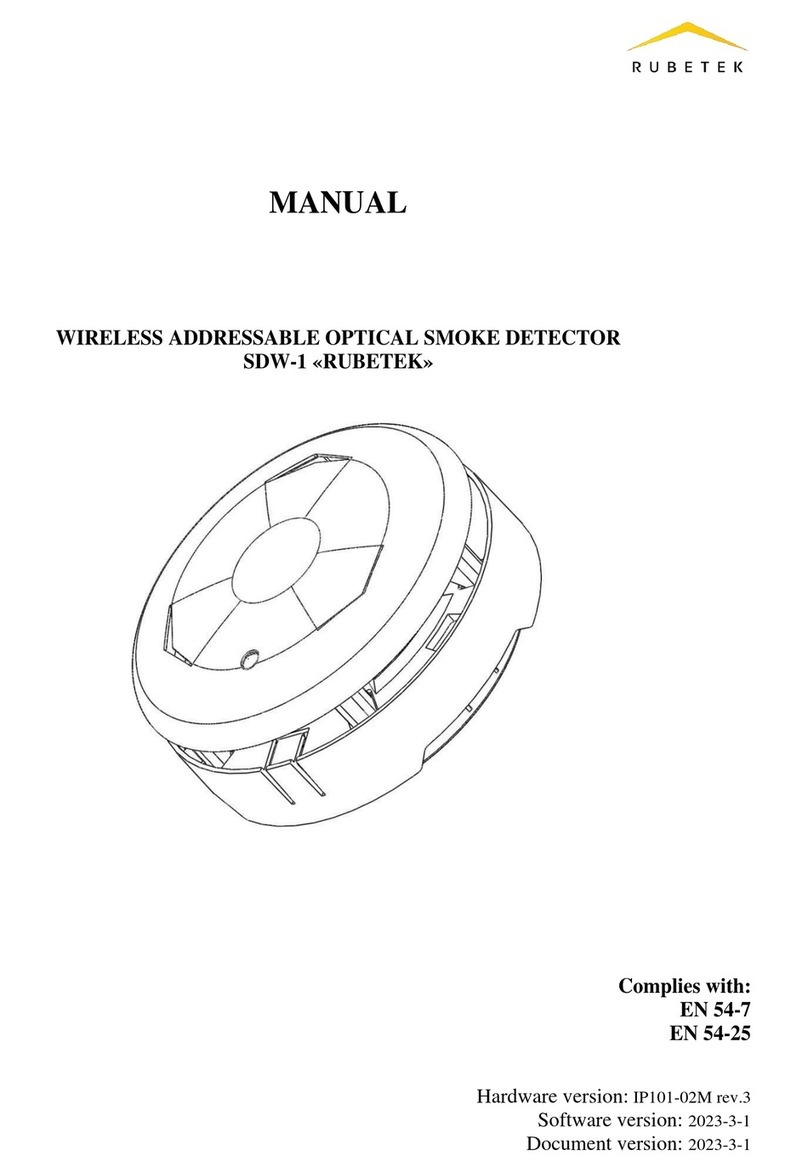2
Table of contents
Introduction..........................................................................................................................................3
1. Description and operation...........................................................................................................4
1.1. Function......................................................................................................................................4
1.2. Technical data.............................................................................................................................4
1.3. Apprearance of the detector........................................................................................................5
1.4. Internal design of the detector....................................................................................................5
1.5. Complete set...............................................................................................................................6
2. Intended use................................................................................................................................6
2.1. Preparation for use......................................................................................................................6
2.2. Detector location.........................................................................................................................6
2.3. Installation..................................................................................................................................7
2.4. Detector connection to CP..........................................................................................................8
2.6. Detector deactivation................................................................................................................12
2.7. СP bypass mode........................................................................................................................13
2.8. «Fire 2» confirmation alarm signal configuration....................................................................13
3. Maintenance..............................................................................................................................14
3.1. Safety precautions.....................................................................................................................14
3.2. Functional test...........................................................................................................................14
4. Storage......................................................................................................................................15
5. Transportation...........................................................................................................................15
6. Disposal....................................................................................................................................16
7. Manufacturer’s warranty ..........................................................................................................16
8. Claims.......................................................................................................................................16
9. Certification..............................................................................................................................16
10. Manufacturer ............................................................................................................................16
11. Supplier...........................................................................Ошибка! Закладка не определена.





























